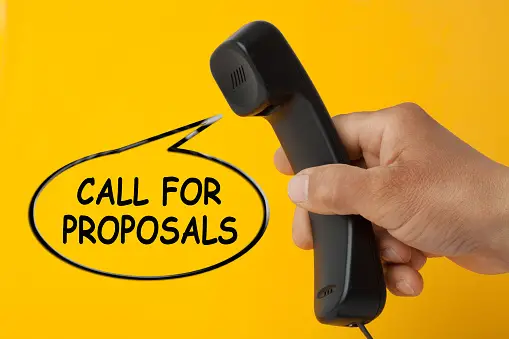Writing a Winning Federal Grant Proposal requires understanding the process and the right approach to adopt.
Federal grants are a great source of funding for non-profit organizations, but the competition can be fierce. Writing a winning grant proposal requires careful research, planning, and writing skills.
In this article, we’ll walk you through the process of writing a winning federal grant proposal, step-by-step, with practical examples to help illustrate key concepts.
Step 1: Research Federal Grants
The first step in writing a winning federal grant proposal is to research available grants. There are many sources of information on federal grants, including the Federal Grant Opportunities website, which lists all current federal grant opportunities. You can also check the websites of federal agencies that are relevant to your organization’s mission, such as the Environmental Protection Agency or the National Endowment for the Arts.
Once you’ve found a federal grant that you’re interested in applying for, read the Request for Proposal (RFP) carefully to make sure that your organization meets the eligibility requirements and that the grant aligns with your organization’s mission.
Step 2: Plan Your Proposal
After you’ve researched the federal grants that you’re interested in, it’s time to plan your proposal. Start by creating a timeline that includes deadlines for each step of the process, from researching grants to submitting the proposal.
Next, identify the key elements of the RFP, including the goals of the grant, the eligible activities, and the evaluation criteria. This will help you to focus your proposal and ensure that you address all of the key elements of the RFP.
Step 3: Write Your Proposal
Now that you’ve planned your proposal, it’s time to write. Start by writing a clear, concise summary of your proposal, also known as the Executive Summary. This should include the purpose of the grant, the goals of your organization, and a brief overview of your proposed activities.
Next, write a detailed description of your organization, including its history, mission, and accomplishments. This will help the reviewers understand the context for your proposal and why your organization is well-suited to carry out the proposed activities.
After you’ve described your organization, write a detailed description of the proposed activities. Be sure to describe the specific steps that you will take to achieve the goals of the grant, as well as the timeline for each activity.
Finally, include a budget section that clearly shows the costs associated with each activity, as well as a detailed explanation of how you will use the grant funds.
Step 4: Review and Edit Your Proposal
After you’ve written your proposal, it’s important to review and edit it carefully. Check for typos, grammar errors, and other mistakes that could hurt your chances of winning the grant.
Ask colleagues, friends, or experts in the field to review your proposal and provide feedback. They may be able to offer suggestions for improving your proposal and help you to identify areas that need clarification.
Step 5: Submit Your Proposal
Once you’ve reviewed and edited your proposal, it’s time to submit it. Make sure to submit your proposal by the deadline, and be sure to follow all of the instructions in the RFP.
Examples of Successful Federal Grant Proposals
To help illustrate key concepts and provide practical examples, let’s take a look at two successful federal grant proposals.
Example 1: The Environmental Protection Agency
The Environmental Protection Agency (EPA) received a federal grant to support its work on environmental education and outreach. The EPA’s proposal focused on providing environmental education to underserved communities, including low-income and minority communities.
The EPA’s proposal included a clear and concise executive summary that outlined the purpose of the
grant and the goals of the organization. The proposal then provided a detailed description of the EPA, including its history, mission, and accomplishments in environmental education.
The proposed activities section of the EPA’s proposal was particularly strong, as it provided a clear, step-by-step plan for reaching the goals of the grant. The proposal included a timeline for each activity, as well as a detailed description of how the EPA would engage with underserved communities and deliver environmental education.
Finally, the budget section of the EPA’s proposal was well-organized and showed how the grant funds would be used to support the proposed activities. The EPA’s proposal was successful because it was well-researched, well-planned, and well-written, and it provided a clear, detailed description of the organization and its proposed activities.
Example 2: The National Endowment for the Arts
The National Endowment for the Arts (NEA) received a federal grant to support its work in the arts. The NEA’s proposal focused on providing support for artists and organizations that are working to bring the arts to underserved communities.
The NEA’s proposal included a clear and concise executive summary that outlined the purpose of the grant and the goals of the organization. The proposal then provided a detailed description of the NEA, including its history, mission, and accomplishments in supporting the arts.
The proposed activities section of the NEA’s proposal was particularly strong, as it provided a clear, step-by-step plan for reaching the goals of the grant. The proposal included a timeline for each activity, as well as a detailed description of how the NEA would engage with artists and organizations to bring the arts to underserved communities.
Finally, the budget section of the NEA’s proposal was well-organized and showed how the grant funds would be used to support the proposed activities. The NEA’s proposal was successful because it was well-researched, well-planned, and well-written, and it provided a clear, detailed description of the organization and its proposed activities.
In conclusion, writing a winning federal grant proposal requires careful research, planning, and writing skills. By following the steps outlined in this article, and using the examples of successful federal grant proposals as a guide, you can increase your chances of winning a federal grant and securing funding for your non-profit organization.




